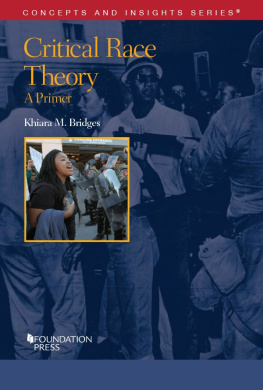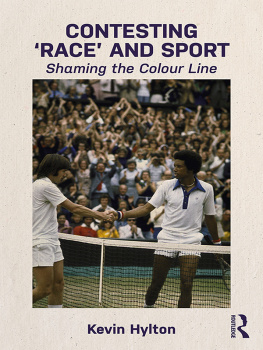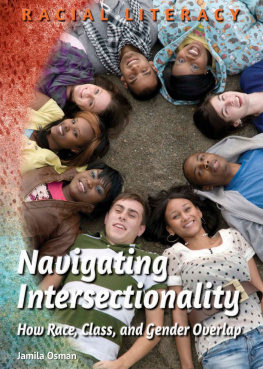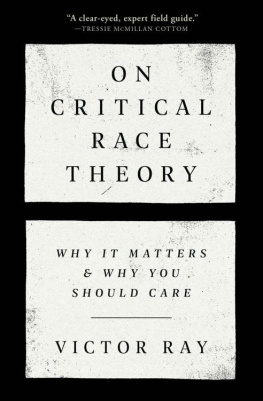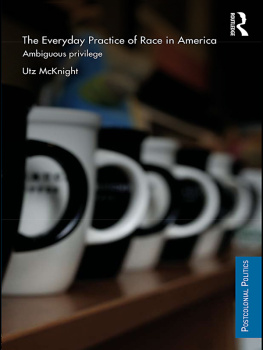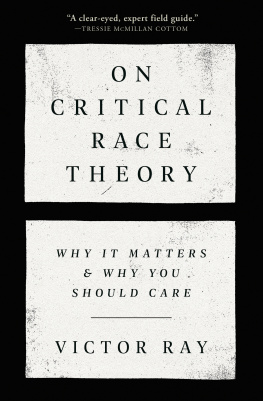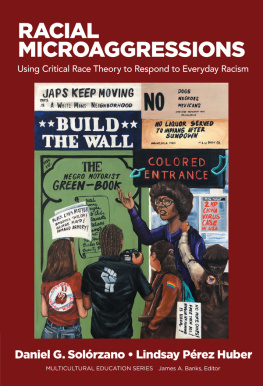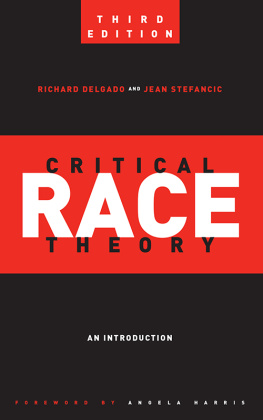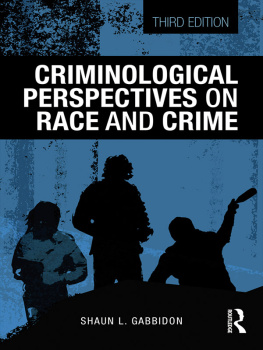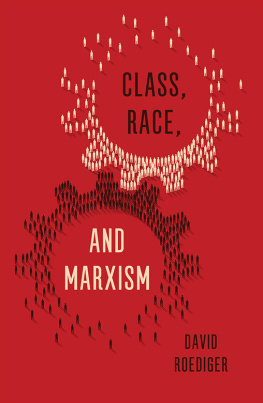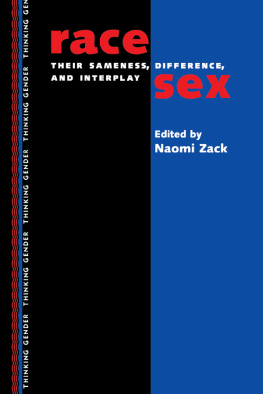Editorial Board
Saul Levmore
Directing Editor
William B. Graham Distinguished Service Professor of Law and
Former Dean of the Law School
University of Chicago
Daniel A. Farber
Sho Sato Professor of Law
University of California at Berkeley
Heather K. Gerken
Dean and the Sol & Lillian Goldman Professor of Law
Yale University
Samuel Issacharoff
Bonnie and Richard Reiss Professor of Constitutional Law
New York University
Harold Hongju Koh
Sterling Professor of International Law and
Former Dean of the Law School
Yale University
Thomas W. Merrill
Charles Evans Hughes Professor of Law
Columbia University
Robert L. Rabin
Calder Mackay Professor of Law
Stanford University
Hillary A. Sale
Professor of Law and Affiliated Faculty
McDonough School of Business, Georgetown University
Critical Race Theory
A Primer
Khiara M. Bridges
Professor of Law
Professor of Anthropology
Boston University
CONCEPTS AND INSIGHTS SERIES

The publisher is not engaged in rendering legal or other professional advice, and this publication is not a substitute for the advice of an attorney. If you require legal or other expert advice, you should seek the services of a competent attorney or other professional.
Concepts and Insights Series is a trademark registered in the U.S. Patent and Trademark Office.
2019 LEG, Inc. d/b/a West Academic
444 Cedar Street, Suite 700
St. Paul, MN 55101
1-877-888-1330
Printed in the United States of America
ISBN: 978-1-68328-443-7
To Dr. James Bridges, my beloved Uncle J, who loves me so much that he reads all of my books.
Acknowledgments
I am grateful to the many people who helped bring this book to life. Thanks to Khaled Beydoun, Osagie Obasogie, and David Rossman for offering incisive comments on several of the books chapters. I am incredibly indebted to Kristina Fried, Michael Onah, and Chelsea Tejada for their impeccable research assistance. Thanks to Ryan Pfeiffer at Foundation Press for inviting me to write this book and for being such a wonderful editor. (And thanks to Jim Fleming, my brilliant and generous colleague, for sending Ryan my way!) Thanks as well to Staci Herr at Foundation Press for all of the help that she provided.
I am forever grateful to Kendall Thomas, my mentor and friend, for introducing me to Critical Race Theory when I was just a baby. Thank you to the community of critical race theorists and progressive race scholars who insist upon challenging the status quo and dreaming of a just world. Thank you for developing the audacious, powerful, inspired theory that I humbly describe in this book.
A special debt of gratitude is owed to my immediate familyClive Bridges, Deborah Bridges, Khari Bridges, and Algeria Bridgesfor making me into who I am today. Thanks to Mams and Paps Reynaert, mijn schoonouders , for welcoming me into the family and being so very good to me. And, of course, thank you to Gert Reynaert, mijn perfecte echtgenoot , for making my life so very sweet. On a scale of 1 to 10, I love you a 79.
Portions of chapter 2 were previously published in Jens Meierhenrich and Martin Loughlin, eds., The Cambridge Companion to the Rule of Law (Cambridge: Cambridge University Press, 2019), reproduced with permission.
Portions of chapters 5 and 7 were previously published in Khiara M. Bridges, Excavating Race-Based Disadvantage Among Class-Privileged People of Color, 53 Harv. C.R.-C.L. L. Rev. 65 (2018).
Summary of Contents
. The Conservatism of Liberal Discourse on
Race 35
III. The Claim That People of Color Speak in a Distinctive
Voice 73
Table of Contents
. The Conservatism of Liberal Discourse on
Race 35
Stories Persuade Through Emotion, Not
Reason 68
Stories Make Dialogue Difficult, if Not
Impossible 72
III. The Claim That People of Color Speak in a Distinctive
Voice 73
B. Centering Latinx Subjects Reveals Insights About Issues That Are Not Specifically About Latinx
Subjects 92
A. The Legal Construction of Race in the Pre-Civil
Rights Era 131
The Construction of Race in Modern
Immigration Law 139
B. Does Implicit Biases Translate into Biased
Behavior? 168
C. Do Implicit Biases Matter in Institutional Contexts
That Have Proscribed Discriminatory Conduct? 170
D. Is It Not Rational to Have BiasesEither Implicit or ExplicitAgainst Historically Disadvantaged
Groups? 170
Interpersonal v. Institutional
Microaggressions 184
Microassaults v. Microinsults v.
Microinvalidations 187
B. The Stuff of White Privilege Is Ultimately
Insignificant 205
. The Relationship Between Race and
Class 215
E. Intersectionality Does Not Theorize Privileged
Groups 245
Erasure During the Marriage Equality
Debate 256
B. Race and the Meanings We Attach to Sexual
Identities 261
II. Critical Race Theory and Disability Studies: Twin
Bedfellows 303
III. What Can Studying the Intersection of Race and
Disability Reveal? 307
B. The Overrepresentation of Children of Color in
Special Education Classes 311
Individualist Explanations for Racial
Disparities in Health 332
II. The (Tenuous) Constitutionality of Race-Based
Affirmative Action 345
A. Regents of the University of California v. Bakke
(1978) 345
I. Affirmative Action Results in Overmatch/
Mismatch 362
i. Problematic Centering of Drug
Crimes 389
ii. Black Support for Mass
Incarceration 390
iii. Class Privilege and Mass
Incarceration 390
c. Nonracial Explanations of Mass
Incarceration 391
Critical Race Theory
A Primer
Introduction
- During the 2016 campaign for the Republican presidential nomination, hopefuls Jeb Bush and Donald Trump both asserted that it was damaging to the country when noncitizen women give birth to their children within U.S. borders. They referred to the infants of these women as anchor babieschildren whose birthright citizenship allow them to function as anchors, mooring their undocumented mothers to the country and ensuring that these women could not easily be moved back to their countries of origin. While the term anchor baby is race neutral in the sense that it does not explicitly mention race, most would agree that the term is racially loaded. It acquires its racial connotation from the fact that those who employ the term typically use it to refer to undocumented immigrants who hail from Mexico and Central America. Thus, anchor baby implicitly refers to Latinx infants. As such, anchor baby allows people who use the term to talk about race without ever explicitly mentioning race. Perhaps that is why many people understand the term to be, at best, politically incorrect, or, at worst, a slur.
We might understand the issue of undocumented immigration, as a general matter, to be racially loaded. This is because close to three-quarters of those who have immigrated to the U.S. without authorization are from Mexico and Central America. Thus, when we talk about curbing undocumented immigration, we are talking about restricting the numbers of Latinx people who may enter the country; when we talk about making it easier for undocumented immigrants to naturalize, we are talking about making it simpler for Latinx people to become citizens. This may make us wonder whether ideas about race have informed our immigration laws as well as the views that politicians, pundits, scholars, and we, as citizens, have about those laws.

